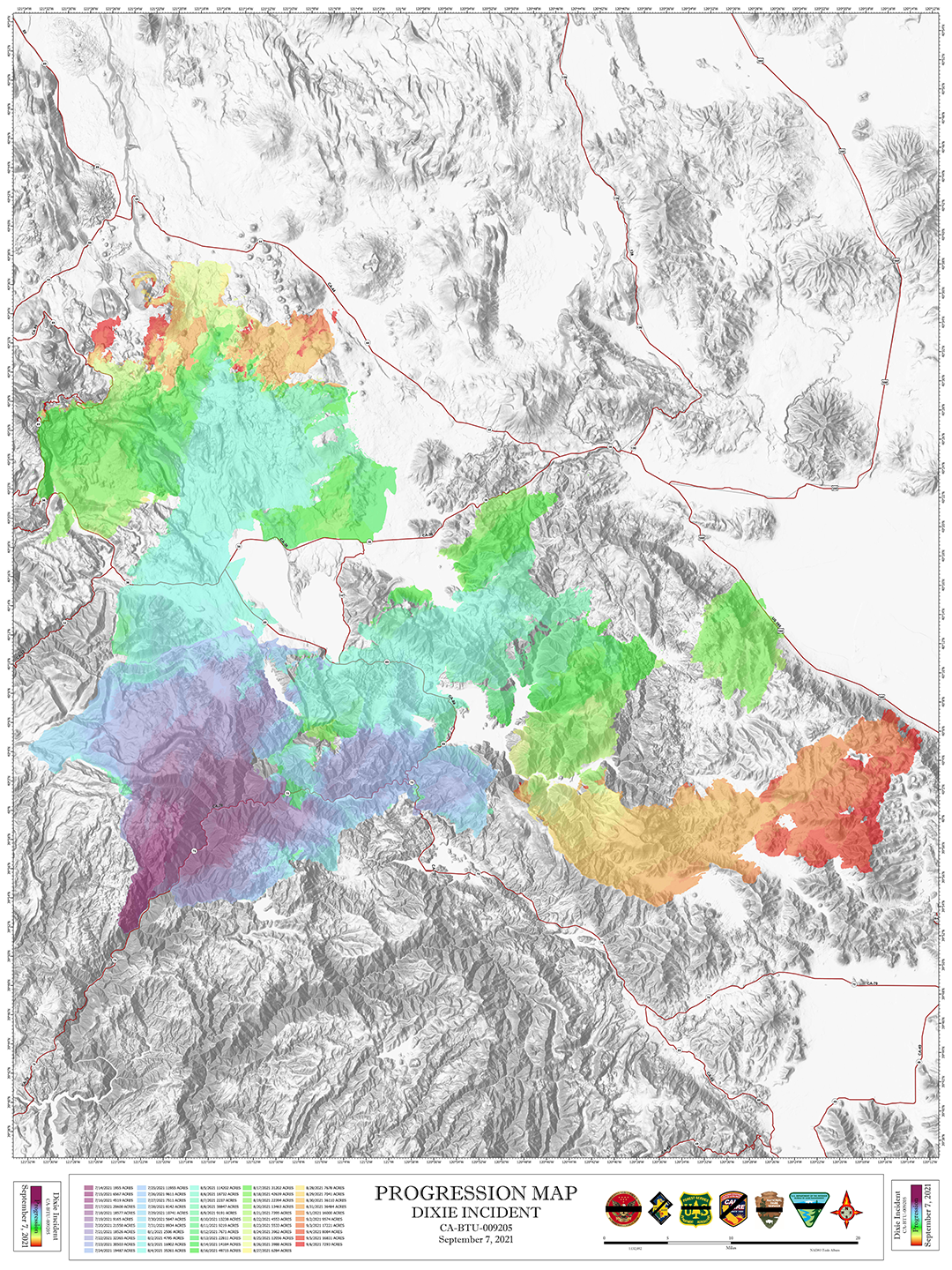Sept. 7 Digest: This Week in Wildfire Recovery News
This is a digest of selected news and media that emerged over the last week related to wildfire emergencies, recovery efforts, and resilience building efforts in the American West.
From InciWeb, a daily progression map of the spread of the Dixie Fire, starting on July 14 in purple, up to and orange-red on September 7, 2021, so far 55 colors used for as many days,
What Is It Like To Evacuate from a Megafire and What Happens After the Fire?
From KQED Forum, Hosted by Alexis Madrigal | Sept. 3, 2021
Explore 3D map of Caldor and Tamarack Fires in the Sierra region
From Mercury News, Bay Area News Group by Paiching Wei | Published Sept. 3, 2021, Updated Sept. 7, 2021
Nearly 1 in 3 Americans experienced a weather disaster this summer
From The Washington Post, by Sarah Kaplan and Andrew Ba Tran | September 4, 2021
A new Washington Post analysis of federal disaster declarations finds that nearly 1/3 of Americans experienced a major weather disaster in the last three months.
Devastating fires could damage Lake Tahoe’s iconic blue waters
From CalMatters, by Rachel Becker | August 31, 2021
Researchers are speculating how recent megafires, including the Caldor Fire will impact the clarity of Lake Tahoe's water and the ecosystem that depends on it.
California firefighters ‘stretched to limit’ as devastating blazes become the norm
From The Guardian by Gabrielle Cannon | September 3, 2021
Tens of thousands of firefighters are working across the US west – but extreme conditions are making wildfires exponentially worse
How South Lake Tahoe was saved from the Caldor Fire
From SFGate, by Julie Brown | Sept. 3, 2021
A combination of a massive influx of firefighting support, favorable weather and a few years of homeowners creative defensible space around their homes made all the difference.
Hundreds of seniors evacuated in New Orleans after 5 found dead in Ida's wake
From NBC News, by Tim Stelow | September 6, 2021
In disaster how do we care for our elderly? (This story focuses on hurricane Ida, but we can also talk about this topic related to wildfire.)
How to Help a Friend Who Lost Their Home in a Fire
From KQED by Carolynn Spezza | Original article Nov. 5, 2017 - reposted recently
From the experience of a person who lost their home, 15 thoughtful, practical ways to help.
Survivors of California's deadliest wildfire are now helping other survivors pick up the pieces
From Action News Now By Christina Maxouris, CNN | September 4, 2021
Campfire survivors pay it forward and offer assistance to Dixie Fire survivors and evacuees.
A year after fire destroyed Malden, a grieving town slowly rebuilds
From The Seattle Times, by Leah Willingham and Jay Reeves | Sept. 5, 2021
A year after fire destroyed the rural town of Malden, WA, the recovery is slow, resources are scarce and folks are living in RVs and builders are hard to find.
Dixie and Caldor Fires - Fuel Management
From The Lookout's YouTube Channel, | September 5, 2021
How 'fuels management' helped over recent years helped protect the communities in South Lake Tahoe and Lassen County. Video below.
Infrastructure bill is about the future; more to do for rural America
OPINION From The Daily Sentinel by John Stulp | Sept. 5, 2021
How the infrastructure bill could provide overdue investment in rural America, and specifically the needs of agricultural economies in Colorado.
'Good fires' gave forest managers a useful tool. Climate change may take it away
From Arizona Republic, by Anton L. Delgado | Sept. 3, 2021
Allowing fires caused by lightning was once part of the strategy, but now with drier, hotter climate and forests that have been left to grow for years, it is a risky option.
Overlapping Disasters Expose Harsh Climate Reality: The U.S. Is Not Ready
From the New York Times, by Christopher Flavelle, Anne Barnard, Brad Plumer and Michael Kimmelman | September 2, 2021
As disasters continue to devastate communities across the country, how did we fall short in preparing for climate change, and what can be done now?

